Fabric Focus: Decorating With Touchy-Feely Velvet
http://decor-ideas.org 06/06/2015 04:13 Decor Ideas
Ahhh, velvet! It makes everything seem just a little more sumptuous. With its regal good looks and unsurpassed softness, it’s hard not to love it. And there’s a bunch of different velvet types from which to choose, including solids, devoré, crushed, mohair and silk.

“Velvet” is synonymous with “special.” Don’t red velvet cupcakes sound more alluring than plain cupcakes? Velvet slippers feel more luxurious than a cotton pair. “Velvety smooth” is even a common expression used to describe anything soft or flowing.
Velvet has been around since the eighth century and sprung out of Baghdad and Cairo. While clearly not the new kid on the block, it has become increasingly popular in the past few years. If you’re considering this posh fabric for your home, here’s what you need to know.
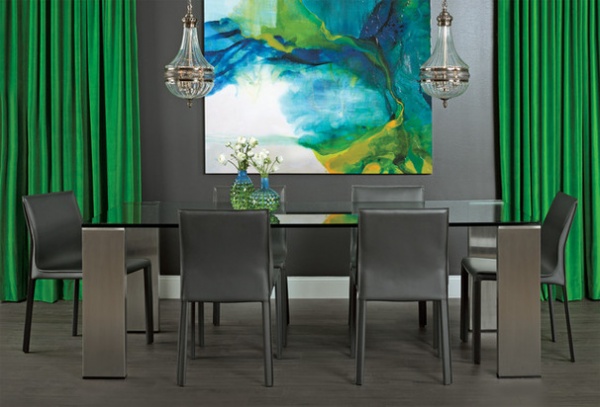
Velvet Pros
Softness and luxury. Velvet is one of those materials that you buy because you want it, not because it’s overly practical. It’s a luxury fabric for special applications — and looks and feels the part. The fabric has a suppleness that is perhaps not achieved in any other fabric.
Light and volume. Because velvet has a nap, or direction in which the pile of fibers lies, it catches and reflects light as it moves across a shape or folds. Velvet accentuates the volumetric form of the piece it’s covering.
Color depth. Velvet is dyed after it’s been woven, and the pile of its fibers accepts dye very well, so the colors tend to be quite rich. The green velvet drapery panels shown here wouldn’t have the same intensity if they were made of linen, for example.
Good insulation. Velvet is typically quite thick and dense, and makes a good insulation barrier, especially for window treatments.
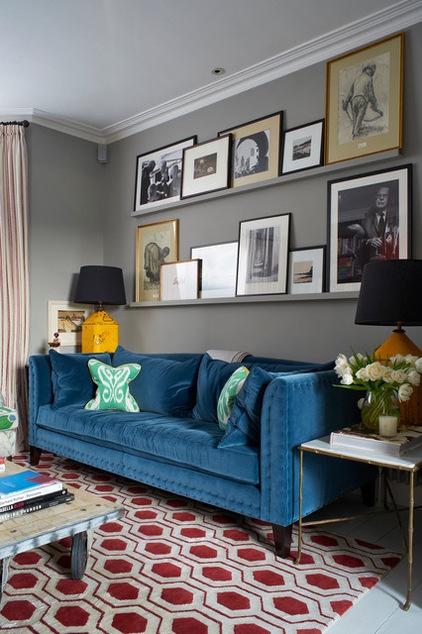
Velvet Cons
Challenging to clean. Velvet is known to be more difficult to clean and maintain than many other fabrics. If you have pets, consider that velvet unfortunately is a magnet for fur. You’ll likely become friendly with your lint brush. Also, velvet shouldn’t be cleaned with water or with water-based cleaners, because they can flatten the fibers and change their appearance.
Velvet upholstery needs to be cleaned with a solvent-based cleaner by a professional upholstery cleaning company. Some advertise they specifically have experience cleaning velvet and other specialty fabrics, so do your research. It doesn’t hurt to request cleaning testimonials too.
Expensive. Quality velvet tends to be on the pricey side compared to other upholstery fabrics. Expect to pay in the range of $70 per yard for a quality branded poly/cotton velvet to $300 per yard for a silk or mohair. However, durable velvet can be found at discount fabric outlets in the $30-to-$70-per-yard range too.
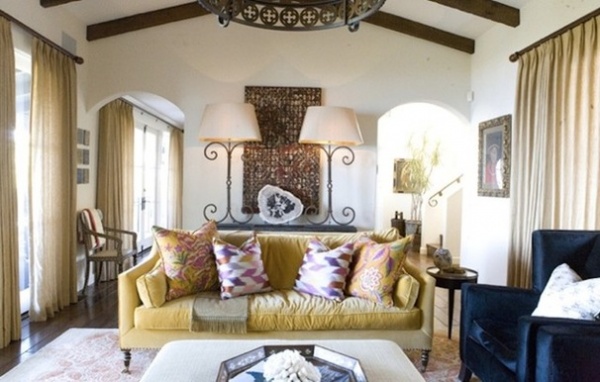
Density and Fiber Type
Velvet is created by clipping the surface of looped, densely packed woven fibers. Some velvets can be fragile, while others are on the tougher side. The durability depends on what fiber the velvet is made from and how dense the pile, or face, of the fabric is.
A velvet with a higher pile but a less dense weave will not be as durable as one with a shorter, denser pile. You can’t necessarily tell by looking at one velvet sample, so touch several different velvets and bend them so you can see the base fabric and compare their construction.
Wool is one of the most durable and resilient fibers, while cotton is less resilient. Most velvets on the market are a mixture of natural and synthetic fibers to have the best attributes of each. Common fibers that are mixed include wool, silk, cotton, linen, mohair and viscose rayon and polyester.
Durability and abrasion tests. It’s hard to visually determine whether a fabric is durable or not. Check to see if your sample has results from either the Wyzenbeek or Martindale abrasion test. These tests measure how quickly the fabric wears. A result of 15,000 double rubs or more is considered heavy-duty. Many velvets have marks of around 50,000 double rubs.
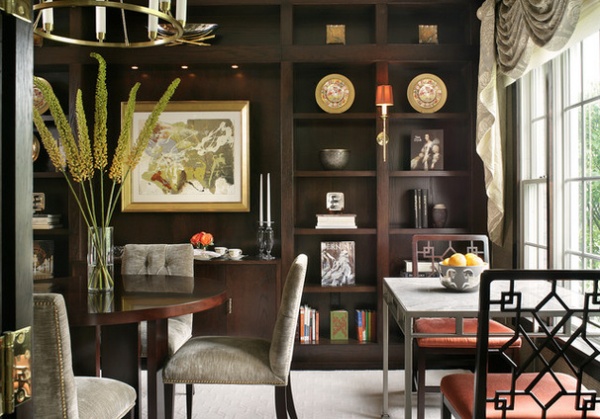
Velvet Varieties
Like a melting pot, velvet has a lot of different looks. The variation depends on either the characteristics of the fiber used or its construction.
Linen velvet. The dining chairs shown here are upholstered in a velvet made from linen. Linen velvet has thin striations and a nubbiness to give it a textured, dry appearance. Unlike heavier wool velvets, linen velvet is cooler on the body and has a more casual aesthetic.
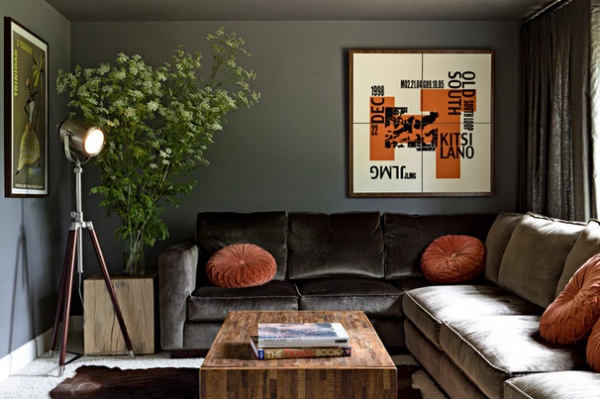
Silk velvet. Silk velvet is the epitome of indulgence. Once you run your hand along silk, you’ll never forget it. It is an experience. Silk filaments act like little prisims and reflect the light, which is why it has a pronounced luster, as seen in the silk velvet covering this sofa. Silk velvet tends to have a “wet” appearance.
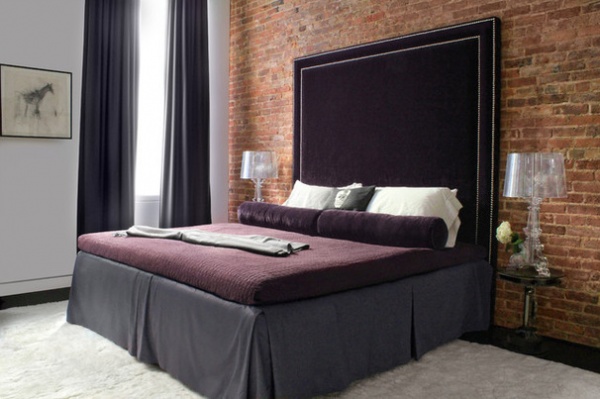
Mohair. Mohair velvet is made from the fleece of alpaca. It is the least susceptible to crushing or matting, and is often used in high-use commercial applications.
While mohair velvet is durable, it’s not as shiny as silk and synthetics like rayon. Mohair velvet has a subtle glow rather than a marked sheen. It’s also quite thick, so it has limitations on smaller components, like upholstered arms and welting. The headboard here is upholstered in a deep violet mohair velvet.
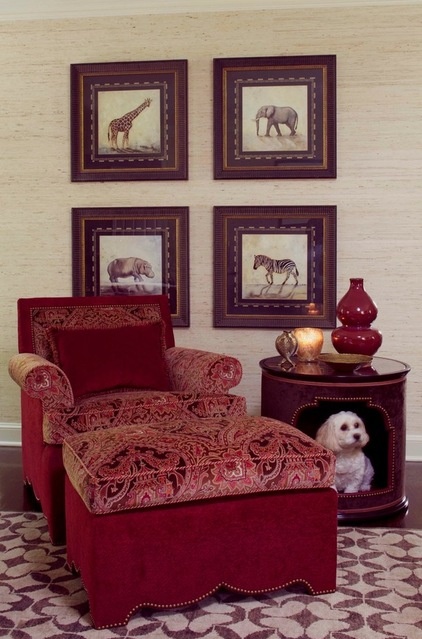
Printed velvet. Don’t think all velvets are solid planes of color. Some are topically printed with patterns, like this paisley-print velvet.
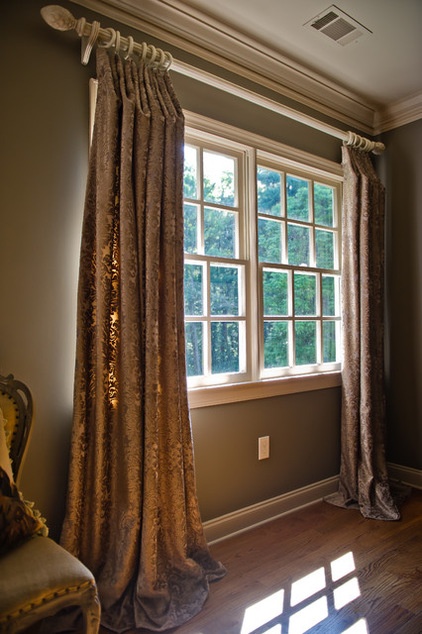
Burnout velvet. Also known as devoré, burnout velvet is subjected to a chemical process that leaves velvet only in the patterned areas against a burned-out, semitransparent background. Here, you can see light passing through from behind these drapes.
Designer Ashley Taylor says burnout velvet fabric is lightweight and easy to work with, and provides wonderful texture. Velvet, she says, is one of her go-to materials to dress up a room and to add weight, texture and dimension, especially in monochromatic color schemes, as in this room.
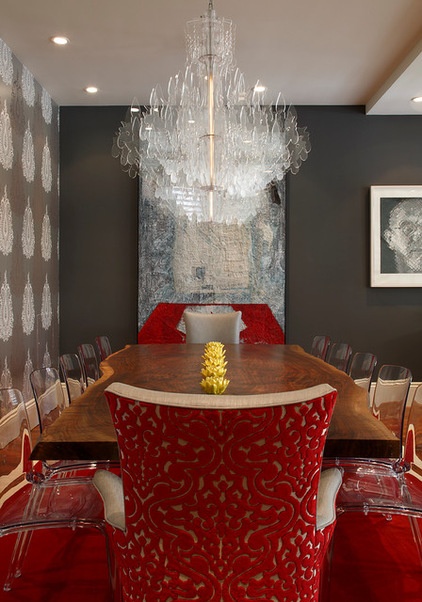
Figured velvet. Figured velvet has a pile that’s woven only in specific areas to create a pattern. The velvet design ends up being raised above the background material. Artistic Designs for Living says the fabric shown here, Clarke & Clarkes’ Florentine pattern in Garnet, is a red velvet pattern paired with a metallic twill weave.
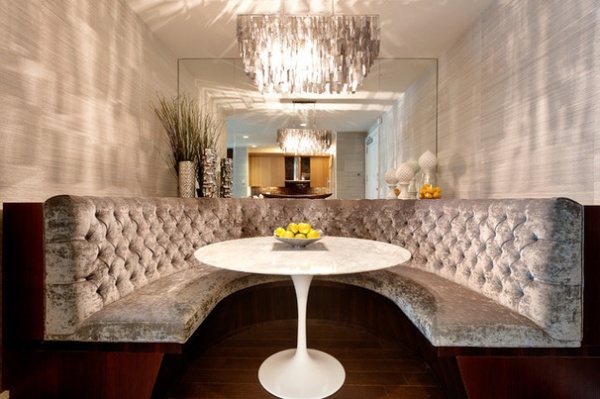
Crushed velvet. Crushed velvet has a distinctive mottled look; the nap lies in different directions to play with the light. It’s crushed and twisted during the fabrication process while the fabric is still wet. Designer Lo Chen says the example seen here is made of polyester. Crushed velvet is often used in funkier, nontraditional spaces.

Nap Consideration
No, not an afternoon nap. Again, nap is the direction in which the velvet pile lies on the fabric. Most velvets have a nap. It is extremely important to be aware of the nap direction when making draperies or upholstering furniture. Each application should have the nap running in the same direction, otherwise it will look stripey, like a lawn freshly mowed up and down.
Seating. For seating, the velvet nap should run (meaning the smoother direction should go) from top to bottom: so, from the top of the back cushion down to the seat and from the back of the seat cushion to the front of the seat cushion, then down toward the floor. If armrests are upholstered, the nap should run from outside in. This application allows for optimal wear.
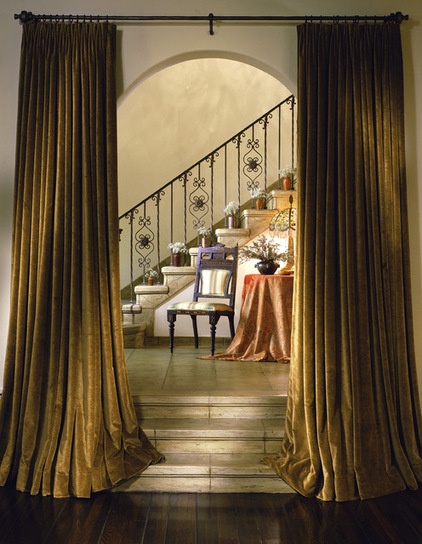
Drapery. On the other hand, for drapery, the nap should run from bottom to top. So, if you run your hand along the drapery panel from the bottom toward the top, it should follow the smoother nap direction. The vertical orientation of the drapery panel allows the pile to open up and fall in the other direction a bit, so it interacts more with the light. If the nap is oriented downward, the velvet can appear flat.
More:
Upholstery That Stands Up to Anything
Decorate With Grain Sacks for Quick Farmhouse Style
Related Articles Recommended












